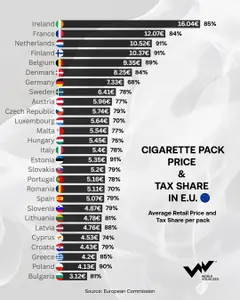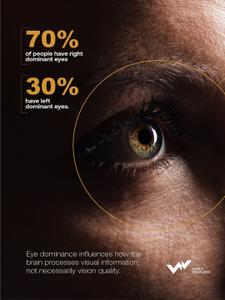health
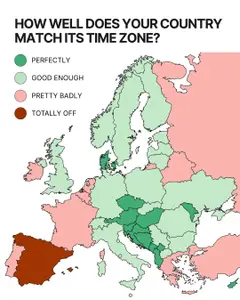
Environment / 1 week ago
The silent tug-of-war between the clock and the sun in Europe
In Europe, time zones are meant to align daily life with the sun’s rhythm, but in reality, many countries run on a social clock that’s out of sync with their geographical position. A new map shows exactly how well (or badly) nations match their time zones to their natural solar time: some tick in near-perfect alignment (marked in dark green), while others live in what feels like a parallel timeline (shaded brown).

Environment / 2 weeks ago
Countries with the highest testosterone levels
A new visual by World Visualized highlights the countries with the highest average testosterone levels, measured in nanograms per deciliter (ng/dl). The data reveals some surprising global trends, with Uzbekistan leading the world at 773 ng/dl, followed closely by Croatia (752 ng/dl) and Cameroon (731 ng/dl).
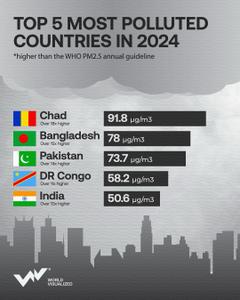
Environment / 4 weeks ago
The world’s most polluted countries
Air pollution remains one of the world’s most pressing environmental and health threats. The latest IQAir 2024 World Air Quality Report paints a troubling picture, showing that millions of people still breathe air far above safe health limits. According to the report, Chad, Bangladesh, Pakistan, the Democratic Republic of Congo, and India were the world’s most polluted countries in 2024, with air quality levels many times higher than the guidelines set by the World Health Organisation (WHO).
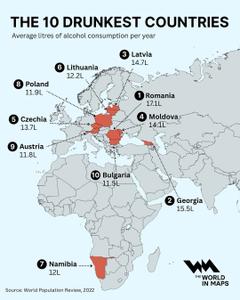
Culture / 5 weeks ago
Eastern Europe leads global alcohol consumption
The highest per-capita alcohol consumption in the world is concentrated in Eastern Europe. According to data from World Population Review (2022), Romania tops the list at 17.1 liters of pure alcohol per year, followed by Georgia (15.5 L), Latvia (14.7 L), Moldova (14.1 L), Czechia (13.7 L), Lithuania (12.2 L), Namibia (12 L), Poland (11.9 L), Austria (11.8 L), and Bulgaria (11.5 L).
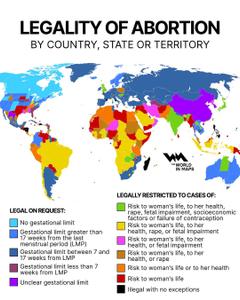
Maps / 6 weeks ago
Abortions laws around the world
Across the globe, the ability to end a pregnancy still depends largely on where you live. The map above captures the patchwork of how some countries allow abortion on request (often with gestational limits), others restrict it to narrow grounds such as risk to the patient’s life or health, rape, or fetal impairment, and a few still prohibit it entirely. The World Health Organisation estimates that about 73 million abortions occur each year, where laws are restrictive, unsafe procedures rise and account for an estimated 4.7–13% of maternal deaths, while deaths from safe, regulated abortion are exceedingly rare.
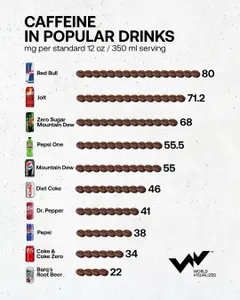
Culture / 11 weeks ago
